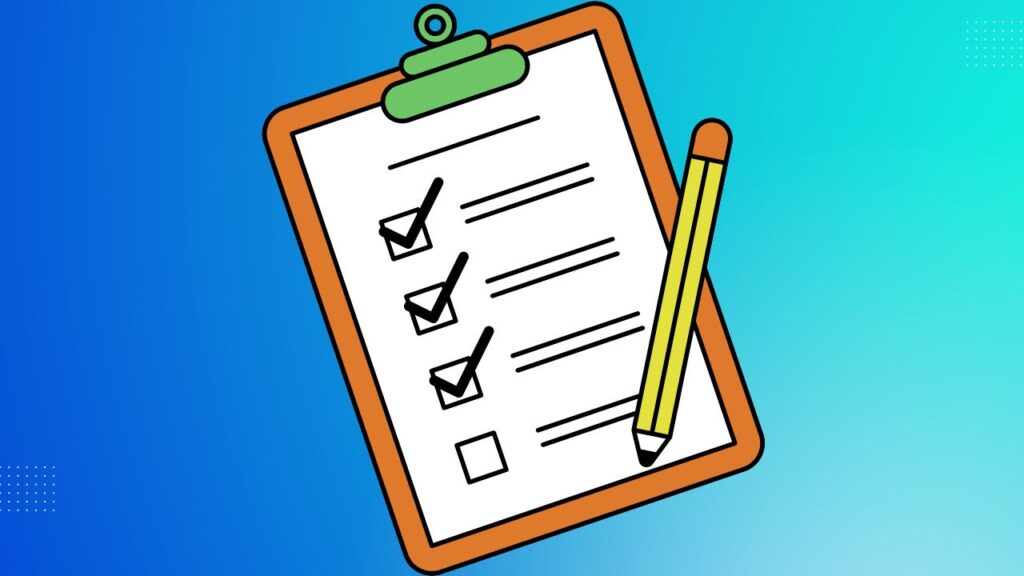Let’s talk about one of the biggest expenses that we all face at some point: buying a car.
According to The New York Times, the average new car costs $38,000, and that’s a big chunk of change.
But what if I told you that you could save thousands of dollars on your next car purchase without sacrificing quality?
That’s right, there are plenty of ways to save money on a car purchase, and I’m going to show you how.
We’ll dive into some of the best strategies and tips that you can use to find the right car for you at a price that won’t break the bank.
To sum it up, saving money on your next car purchase without sacrificing quality requires research, negotiation, and careful consideration of your budget. Shop around for the best deals, negotiate with the dealership, secure financing through a credit union or bank, OR opt for the used car.
And this isn’t just about being frugal or cheap. Saving money on a car purchase can have a big impact on your long-term financial goals.
By choosing the right car and negotiating a great deal, you can free up more money to put towards things like saving for retirement, paying off debt, or even just having more money to spend on the things you love.
So, if you’re ready to save thousands on your next car purchase, stick around.
Whether you’re a first-time car buyer or looking to upgrade your ride, there’s something here for everyone.
Let’s get started!
1. Plan Ahead to Save Money on a Car Purchase

1.1 Determine your budget
Here are some tips:
1.1.1 Calculate how much you can afford to spend
To figure out your budget, take a look at your monthly income and expenses.
Your car payment shouldn’t exceed 15% of your monthly take-home pay.
So, if you bring home $3,000 per month, your car payment shouldn’t be more than $450.
To make things easier, I’ve created a table to help you calculate your monthly budget:
| Monthly income | Monthly expenses | Maximum car payment |
| $3,000 | $1,500 | $450 |
| $4,000 | $2,000 | $600 |
| $5,000 | $2,500 | $750 |
1.1.2 Find the right balance between affordability and quality
It’s important to find a car that meets your needs and fits your budget.
Don’t overspend on a car that’s beyond your means.
You can still find a high-quality car within your budget.
Here are some examples of high-quality cars in different price ranges:
| Price range | High-quality cars |
| $10,000-$15,000 | Toyota Corolla, Honda Civic, Mazda3 |
| $15,000-$20,000 | Honda Accord, Toyota Camry, Mazda CX-5 |
| $20,000-$25,000 | Subaru Outback, Honda CR-V, Toyota RAV4 |
| $25,000-$30,000 | Kia Telluride, Mazda CX-9, Subaru Ascent |
Remember, a car is not an investment. It’s a depreciating asset. So, don’t overspend on a car that will lose its value over time.
1.2 Plan your car purchase timing
1.2.1 Best time to buy a car
Did you know that the best time to buy a car is at the end of the month or the end of the quarter?
Car dealerships have quotas to meet, and they’re more likely to negotiate a better deal with you if they’re close to meeting their sales target.
Additionally, buying a car towards the end of the model year can save you money.
Dealerships are looking to clear out their inventory to make room for new models, so they may offer discounts and promotions to get older models off the lot.
1.2.2 Seasonal Deals and Promotions
Seasonal deals and promotions can also help you save money on your car purchase.
Here are some examples:
- End-of-year sales: Dealerships offer discounts and promotions at the end of the year to clear out inventory.
- Black Friday: Some dealerships offer Black Friday deals on cars.
- Memorial Day, Fourth of July, and Labor Day: These holidays are popular times for car sales. Dealerships often offer discounts and promotions during these holidays.
- Winter months: During the winter months, dealerships may offer discounts on cars that are less popular during the cold weather.
By timing your car purchase strategically, you can save thousands of dollars on your next car.
Keep in mind that the best time to buy a car is when you’re financially ready and have done your research.
1.3 Pre-qualify for a loan
One great way to save money on a car purchase is to pre-qualify for a loan.
This allows you to shop for a car with a specific budget in mind, and you’ll know what interest rate you’ll be paying before you start shopping.
Here are a few tips on how to pre-qualify for a loan:
1.3.1 Understanding your credit score
Your credit score is a number that represents your creditworthiness.
The higher your score, the better interest rates you’ll qualify for.
You can check your credit score for free at sites like Credit Karma or Credit Sesame.
1.3.2 Finding the right lender
Banks and credit unions offer car loans, but you can also get a loan from online lenders like LightStream or Capital One.
Shop around and compare interest rates from multiple lenders to make sure you’re getting the best deal.
1.3.3 Getting Pre-Approved for a Loan
Finally, you’ll want to get pre-approved for a loan.
This means the lender will look at your credit score, income, and other factors to determine how much they’re willing to lend you and at what interest rate.
Getting pre-approved can help you negotiate a better deal with the dealership, and it can also help you avoid spending more than you can afford.
2. Strategies for Saving Money on a Car Purchase

2.1 Research and Compare Prices
2.1.1 Online research tools
Online research tools are a great way to get an idea of what you should be paying for a particular car.
Websites like Kelley Blue Book and TrueCar can give you an estimated price range based on the make, model, and year of the car you’re interested in.
Additionally, you can use these sites to find out the invoice price of the car, which is what the dealer paid for it.
This information can be invaluable when it comes time to negotiate with the dealer.
2.1.2 Visiting dealerships and test driving
While online research is helpful, it’s important to also visit dealerships and test-drive the car you’re interested in.
This will give you a better idea of how the car feels and whether it’s the right fit for you.
It’s also an opportunity to ask the salesperson any questions you may have about the car.
Be sure to take notes on the features you like and any issues you notice.
2.1.3 Negotiating for a better deal
Once you’ve done your research and test driven the car, it’s time to negotiate for a better deal.
Start by making an offer based on your research and the notes you took during your test drive.
Be prepared to walk away if the dealer isn’t willing to work with you.
Remember, there are always other options.
2.2 Consider Used or Certified Pre-Owned Cars
2.2.1 Advantages of buying used cars
One of the main advantages of buying a used car is that it’s often significantly cheaper than buying a new one.
According to Statista, the average price of a new car in 2021 was $42,380, while the average price of a used car was $26,700.
Additionally, used cars typically have lower insurance premiums and can depreciate more slowly than new cars.
2.2.2 Choosing the right certified pre-owned vehicle
If you’re considering a certified pre-owned (CPO) vehicle, be sure to do your research and choose the right one for you.
CPO vehicles are typically newer used cars that have undergone a thorough inspection and come with a manufacturer-backed warranty.
This can give you added peace of mind when buying a used car.
Look for CPO programs from reputable manufacturers like Honda, Toyota, and BMW.
2.2.3 Potential Risks of Buying Used Cars
While buying a used car can be a great way to save money, there are also potential risks to be aware of.
Used cars may have more wear and tear, higher mileage, and potential mechanical issues that you’ll want to be aware of before making a purchase.
To mitigate these risks, consider getting a pre-purchase inspection from a trusted mechanic and running a vehicle history report to check for any accidents or major repairs.
2.3 Look for Incentives and Discounts
When you’re in the market for a new car, it’s important to take advantage of any available incentives and discounts to help you save money.
Here are some ways you can do that:
2.3.1 Rebates and cashback offers
Many car manufacturers offer rebates and cashback offers to entice buyers to purchase their vehicles.
These offers can help you save thousands of dollars on the purchase price of a new car.
You can usually find information about these offers on the manufacturer’s website or by visiting a dealership.
2.3.2 Employee Discounts and other special deals
If you work for a company that has a partnership with a car manufacturer, you may be eligible for an employee discount.
Additionally, many dealerships offer special deals to members of the military, first responders, and other groups.
Be sure to ask about these options when you visit a dealership.
2.3.3 Loyalty programs and referral bonuses
Some car manufacturers and dealerships offer loyalty programs and referral bonuses to customers.
If you’re a repeat customer or if you refer someone else to the dealership, you may be eligible for additional discounts or bonuses.
Check with the dealership to see if they offer any of these programs.
Overall, looking for incentives and discounts is a great way to save money on your next car purchase.
Just be sure to read the fine print and understand the terms and conditions of any offers before you commit to a purchase.
3. Financing Options for Saving Money on a Car Purchase

3.1 Explore Financing Alternatives
Here are some facts that will help you make better decisions.
3.1.1 Leasing vs. Buying
Leasing a car is like renting it for a certain period, usually two to three years.
You’ll have lower monthly payments than if you were buying the car, but you’ll have to return it at the end of the lease.
You may also have to pay additional fees if you go over the mileage limit or return the car with excessive wear and tear.
Buying a car may have higher monthly payments, but you own it at the end of the loan term.
You’ll have higher monthly payments than if you were leasing, but you won’t have to worry about additional fees or mileage limits.
To see which option is better for you, consider how long you plan to keep the car and your budget.
If you plan on keeping the car for a long time, buying may be a better option for you.
To compare the costs of leasing vs. buying, you can use a lease vs. buy calculator readily available a single Google search away.
3.1.2 Personal Loans vs. dealer financing
Personal loans from a bank or credit union may have lower interest rates than financing through a dealer. But you may have to have a good credit score to qualify.
However, dealer financing may offer promotional deals, such as 0% APR financing for a limited time. But be sure to read the fine print and understand the terms.
To compare the two options, you can use a loan calculator to see which one is more cost-effective.
3.1.3 Financing through credit unions
Credit unions are not-for-profit financial institutions that are owned by their members. They may offer lower interest rates than banks and dealerships.
They are also more likely to work with people who have a lower credit score.
To find a credit union, you can search online or ask friends and family for recommendations.
3.2 Negotiate Financing Terms
3.2.1 Interest Rates and Fees
The interest rate you’re offered can make a big difference in the total cost of your car loan.
A lower interest rate can save you hundreds or even thousands of dollars over the life of the loan.
Be sure to compare rates from multiple lenders, including banks, credit unions, and dealerships.
You’ll also want to pay attention to any fees associated with the loan, such as origination fees or prepayment penalties.
These can add to the overall cost of the loan, so be sure to read the fine print and understand the terms.
3.2.2 Length of the Loan Term
The length of your loan term can also affect the total cost of the loan.
A longer-term means lower monthly payments, but you’ll end up paying more in interest over the life of the loan.
A shorter term means higher monthly payments, but you’ll pay less in interest overall.
To see how different loan terms affect the total cost of the loan, you can use a loan amortization calculator.
This tool will help you see how much interest you’ll pay over the life of the loan based on different loan terms.
3.2.3 Down payment and trade-in options
A larger down payment can lower your monthly payments and reduce the total cost of the loan.
If you have a trade-in, you can also use the value of your old car to reduce the amount you need to borrow.
To see how different down payment and trade-in options affect the total cost of the loan, you can use a car loan payment calculator.
This tool will help you see how much you’ll save in interest and how much you’ll pay each month based on different down payments and trade-in options.
4. Other Money-Saving Considerations for Car Purchases

4.1 Shop for Car Insurance Before You Buy
4.1.1 Understanding insurance requirements
Before you buy a car, it’s important to understand the insurance requirements in your state.
Each state has different minimum coverage requirements, and you’ll need to make sure you have enough insurance to comply with the law.
In addition to state requirements, you may also want to consider optional coverage, such as collision and comprehensive coverage, to protect yourself in the event of an accident or theft.
4.1.2 Finding affordable car insurance rates
To find affordable car insurance rates, you’ll want to shop around and compare quotes from multiple insurance providers.
Be sure to consider factors such as the level of coverage, deductibles, and discounts available.
You may also be able to save money by opting for a higher deductible or by taking advantage of discounts, such as safe driving discounts or discounts for multiple vehicles.
4.1.3 Bundling insurance policies for additional savings
Another way to save on car insurance is to bundle your car insurance policy with other insurance policies, such as homeowners or renters insurance.
Many insurance providers offer discounts for bundling multiple policies, which can add up to significant savings.
4.2 Opt for a Fuel-Efficient Vehicle
4.2.1 Understanding Gas Mileage and Fuel
Economy Gas mileage refers to the distance a vehicle can travel on a gallon of fuel, while fuel economy refers to the overall efficiency of a vehicle’s fuel consumption.
Understanding these terms can help you choose a vehicle that is both fuel-efficient and cost-effective.
4.2.2 Choosing the right type of engine and transmission
Choosing the right type of engine and transmission can also impact a vehicle’s fuel efficiency.
For example, a smaller engine or a hybrid engine can often achieve better gas mileage than a larger engine.
Similarly, a vehicle with a manual transmission can often achieve better gas mileage than a vehicle with an automatic transmission.
4.2.3 Considering Hybrid or electric vehicles
If you’re looking for the ultimate in fuel efficiency, you may want to consider a hybrid or electric vehicle.
These vehicles use a combination of electric power and gasoline (in the case of a hybrid) or electricity only (in the case of an electric vehicle) to power the vehicle.
While these vehicles may have a higher upfront cost, they can save you money in the long run on fuel costs.
4.3 Plan for Maintenance and Repair Costs
4.3.1 Understanding long-term costs of car ownership
First up, it’s important to understand the long-term costs of car ownership.
According to AAA, the average cost of owning a car is around $10,728 per year in 2022. That includes everything from gas and insurance to maintenance and repairs.
So, when you’re budgeting for a car purchase, make sure you take those costs into account.
4.3.2 Choosing a reliable make and model
Next, when it comes to choosing a make and model, reliability is key.
According to Consumer Reports, some of the most reliable car brands include Lexus, Mazda, and Toyota.
On the other hand, brands like Jeep, Land Rover, and Fiat are known for being less reliable.
So, it’s worth doing your research and choosing a car that’s known for being dependable.
4.3.3 Saving Money on Routine Maintenance and Repairs
Finally, once you’ve got your car, you can save money on routine maintenance and repairs by doing some of the work yourself.
Obviously, not everyone is a mechanic, but there are certain things you can do to keep your car in good shape without spending a lot of money.
For example, you can change your own oil, replace your own air filters, and check your own tire pressure.
Bottom Line…
So, we’ve covered a lot of ground when it comes to saving money on your next car purchase.
And let me tell you, it’s not just about finding the cheapest car out there. It’s about finding a car that meets your needs and budget without sacrificing quality.
According to a recent survey, the average cost of a new car in the US is over $40,000.
That’s a pretty hefty price tag for most millennials who are just starting their careers. And the last thing you want to do is get stuck with a car payment that you can’t afford.
So, what can you do to save thousands on your next car purchase?
First off, consider buying a used car instead of a new one. Did you know that a new car loses around 20% of its value in the first year alone?
That means if you buy a car that’s just one year old, you can save thousands of dollars without sacrificing much in terms of quality.
Another tip is to do your research before you buy.
Make sure you know what you’re looking for in a car and what you’re willing to pay.
Don’t be afraid to negotiate with the dealer, and always be willing to walk away if the price isn’t right.
Finally, consider financing your car through a credit union or bank instead of through the dealership.
You can often get better interest rates and save money on your monthly payments.
So, there you have it. By following these tips, you can save thousands on your next car purchase without sacrificing quality.
And that means you’ll have more money in your pocket to put towards your financial goals and dreams.
